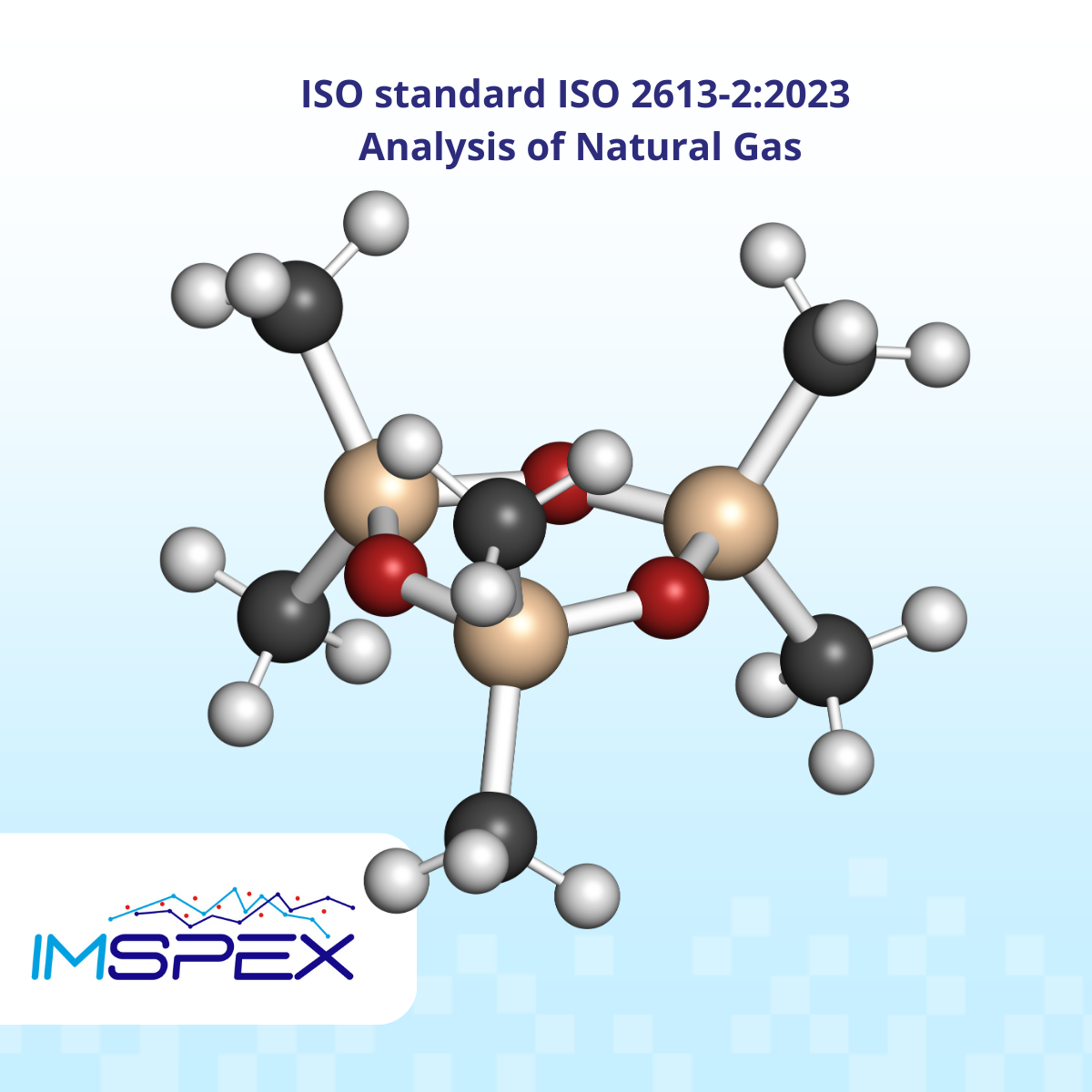We are pleased to announce that Imspex Diagnostic Ltd has achieved a significant milestone: the publication of a new ISO standard for Siloxane testing. Developed in collaboration with NPL and Innovate UK, this standard, ISO 2613-2:2023, details the analysis of natural gas and silicon content of biomethane.
Work undertaken at NPL[1] in conjunction with IMSPEX via an Innovate UK A4i project[2] resulted in the preparation of an ISO standard for siloxane measurement in Biogas. Now published, the Standard describes how our commercially available GC-IMS technology is tailored specifically to measuring siloxanes within biomethane at low concentration (as specified in EN 16723-1[3]and EN 16723-2[4]) and is suitable for use both in the laboratory and field.
ISO standard ISO 2613-2:2023, Analysis of natural gas. Silicon content of biomethane. Part 2: Determination of siloxane content by gas chromatography with ion mobility spectrometry, can be found:(https://www.iso.org/standard/81976.html and is applicable to 8 siloxanes (L2-L5) and (D3–D6) describes suitable calibration and measurement strategies to quantify siloxanes in (bio)methane around and above the 0,3 mg m-3 (14 µmol mol-1) level and applies to analyses within absolute pressure ranges of 1 bar – 2 bar, temperatures of 0 °C – 40 °C and relative humidity < 90 %.
About Siloxanes
Siloxanes are a common contaminant in biogas, caused by their extensive use in common household products such as cosmetics and detergents. These products eventually become entrained in waste streams that are used to generate biogas. Additionally, siloxanes are sometimes added to digesters as anti-foaming agents to improve generation efficiency.
If not effectively removed, siloxanes can cause damage to gas processing and vehicle injection equipment through formation of silica deposits at high temperatures. Many gas distributors require measurement reports to demonstrate that the resultant biomethane conforms with their requirements, which typically includes siloxane content due to its potential to cause damage. Additionally, producers may wish to monitor siloxane content for process optimisation purposes.
[1] https://www.npl.co.uk/case-studies/injection-biomethane-gas-grid
[2] https://iuk.ktn-uk.org/casestudy/biomethane-testing/
[3] EN 16723-1, Natural gas and biomethane for use in transport and biomethane for injection in the natural gas network Part 1: Specifications for biomethane for injection in the natural gas network
[4] EN 16723-2, Natural gas and biomethane for use in transport and biomethane for injection in the natural gas network Part 2: Automotive fuels specification
[5] NPL developed the standard after a funded project via an EMPIR project

